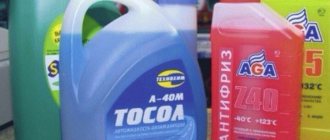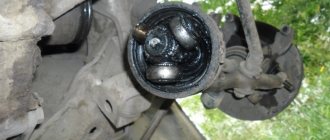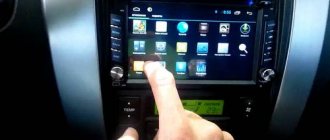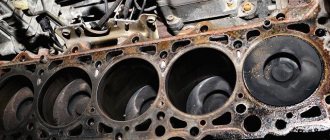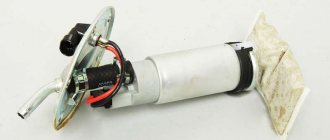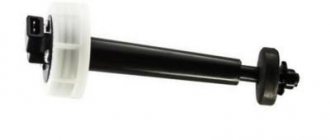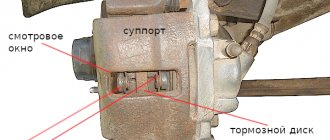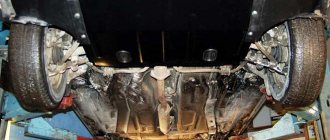Over the course of its life, the electrical heart of a car may require “treatment.” When the breakdown occurred due to a manufacturing defect and during the warranty period, then the question of replacement is obvious. If this happens due to improper operation, storage or physical impact on it (impact during an accident), then the choice remains small. In some cases, the battery cannot be restored and needs to be replaced, but some damage is completely removable depending on desire, availability of direct hands or lack of finances to purchase a new one.
Types of car battery damage
Repairing a car battery, depending on its type (antimony, calcium, hybrid) and the severity of the breakdown, can be done either in your own garage or by contacting a service station. Battery breakdowns are divided into internal and external. The most common battery problems include:
- damage to the battery case, electrolyte leakage;
- damage to the active plates of the battery;
- short circuit of the battery plates;
- rupture of the internal circuit of the battery (breaking off, burning out of the output terminals);
- sulfation of active battery plates;
- rupture of the internal battery circuit.
What batteries can be restored?
Before you restore your car battery, you should know that this procedure does not help in all cases. It is possible to “revive” a car battery only in the situations listed below:
- when during operation its plates are not destroyed by high current loads and there are no closed cans in the battery;
- if they have not received irreparable mechanical damage;
- when the battery has become unusable due to natural sulfation.
Restoring a battery is considered an almost impossible task if its plates are severely damaged.
Another option for a critical battery malfunction is when the cans are shorted, swollen, or other mechanical damage is detected.
In all other cases, restoration of the product is possible, but only subject to strict adherence to time-tested technologies.
DIY battery repair
The first sign of the need for battery repair is its rapid charging and equally rapid discharge when trying to start the engine. The reason for this may be a low level of electrolyte in the banks. To correct this, you will need to measure its density with a hydrometer, which should be from 1.23 to 1.3 g per cm 2. If the density is too high, the electrolyte should be diluted with distilled water, since most often it evaporates through breathers (holes in the covers) during charging and operation of the battery.
Hull repair
Damage to the battery casing can occur either from an impact due to an accident, a fall, or from forgetting a “dead” battery in the cold, which will simply “break”. If the electrolyte freezes, the consequences will be further complicated by the fact that the active plates of the battery will be damaged by the ice, and it will not always be possible to correct this.
Methods for eliminating cracks
If leaks with a characteristic sour odor are periodically detected under the battery, this indicates the presence of a crack in the battery housing. To repair, you will need to free the damaged jar from the electrolyte by removing it using a large syringe or rubber bulb. Once a crack is detected, thin holes are drilled at its edges to prevent the split from increasing in length. You can also secure the edges of the crack using metal staples heated to 450-500 o C.
Next, for repairs you will need the following tools and accessories:
- Construction hair dryer with a flat nozzle.
- Soldering iron.
- Polypropylene rods.
Using a heated soldering iron with a sharpened tip, a groove with a V-shaped depression is formed along the length of the crack. A polypropylene rod preheated to a soft state is placed in it. Next, this plastic solder is heated with a soldering iron until the groove is completely filled with melt. In addition, you can repair the crack using a patch by filling the previously cleaned and degreased surface of the battery in this place with a solution of dichloroethane and polystyrene.
Soldering sequence
Soldering should be done in 2 passes. First, the crack itself is soldered, then a patch is applied, and the soldering is repeated. The tightness of the battery is checked by pouring distilled water into it. If everything is done correctly, then electrolyte is added instead of water, and the battery is ready for use again.
Reference. If a crack is detected in the battery case, you should look where the electrolyte has spilled under the hood and neutralize these places with alkali for 10 minutes (1/2 pack of baking soda per bucket of water) to avoid further corrosion of the parts by acid. Bloated paint is not the end result; there may be acid underneath.
The video shows the repair of a car battery case:
Restoring battery terminals
If the battery contacts are deeply oxidized and the integrity of the terminals is damaged, the connection to the vehicle's on-board network deteriorates. There is a loss of battery energy due to breakdown of the oxide (up to 50% of energy).
DIY terminal repair
In this case, repairs are made by cleaning the terminals with sandpaper and replacing the tightening clamps with new ones. If the battery terminal is completely or partially broken, some people turn to a service station, but it is quite possible to repair the car battery yourself.
Terminal disconnection
When tearing off the terminal inside the battery case, a small piece of the pad with the upper part of the terminal is cut out and removed. A hole (Ø≈8mm) is drilled in the upper (broken off) and lower (remaining) parts of the terminals for the twisted and tinned wire. The upper part of the terminal is drilled through, the lower part is 1-2 cm deep.
Drilling the terminal
When drilling the lower part of the terminal, it is necessary to cover the area with a rag to avoid drilled pieces of lead getting into the battery grid. The end of the wire is inserted into the lower segment of the terminal and soldered. The upper part of the terminal is placed on the wire, it is cut to size and soldered in this part. The cut places in the plastic under the terminal are either sealed with plastic or covered with resin.
Assembling batteries and preparing them for use
The technological process of battery assembly includes the following operations:
- assembly of plates into semi-blocks (Fig. 5): negative and positive plates are assembled separately, for this purpose the plates are installed in a fixture; Barrettes are put on the ears of the plates and filled with lead. In negative semi-blocks the number of plates is one more than in positive ones;
- assembly of blocks from half-blocks: half-blocks are assembled in such a way that each positive plate is located between two negative ones.
From the middle of the block, separators are inserted between the plates so that the ribs face the positive plates.
Blocks of plates are crimped in a device (Fig. 6) and installed in jars.
Each battery is covered with a lid. An asbestos cord is placed between the lid and the wall of the jar, which prevents molten mastic from entering the jar when pouring it. The electrical circuit is checked with a voltmeter to ensure there is no short circuit between the plates.
Rice. 5. Assembling the battery plates into half-blocks using the device: 1 - device for assembling half-blocks; 2 — comb of the device for installing the ears of the plates; 3 — lead filler wire; 4 - electric soldering iron; 5 — clamps connecting the soldering iron to the battery; 6 - half block; 7 - plates of positive or negative half-block
Rice. 6. Device for crimping battery plate blocks: 1 - base; 2 - fixed stop; 3 — block of battery plates; 4 - movable stop; 5 - tightening screw
The space between the covers and the battery bank is filled with mastic, which is a mixture of 75% petroleum bitumen No. 5 and 25% aviation or machine oil. Bitumen heating temperature is 170…180 °C.
Intercell connections are placed and welded onto the pins connecting the batteries. The battery terminals are fused with molten lead using a template.
Preparing batteries for use involves preparing the electrolyte, pouring it into the battery and charging it.
Repairing a maintenance-free battery yourself
Maintenance-free batteries do not have filler plugs, which makes it impossible to measure the density of the electrolyte and top it up when the level drops. However, you can add distilled water by drilling a thin hole in the battery case. Filling is done using a medical syringe with a needle, after which the hole is carefully sealed with a soldering iron.
The hole should not be drilled in the top cover of the battery, but on the side surface. The fact is that under the top cover of maintenance-free batteries there are ventilation passages, and violation of their integrity can lead to improper operation of the battery in the future. You can try to restore the capacity of a calcium maintenance-free battery using a cyclic charger, periodically charging and discharging the battery.
This video explains how to service a maintenance-free battery:
Avoiding letting a battery get to the point where it needs repair is easier than repairing it. To do this, you must follow the rules for its operation and storage. But no one is immune from accidents, and no one needs unnecessary expenses. In cases of physical damage to the battery, you should ask the advice of experienced technicians whether this can be fixed, or whether it is just a waste of time and nerves. Good luck on the roads!
Useful video
This video explains how to repair a car battery yourself using a charger:
Car owners use their batteries differently. Someone looks after them and maintains them, while others simply “kill” them and install a new one. Accordingly, the service life in these cases will be different. But sooner or later the need to repair a car battery arises. For those who have spare money, this is not a problem. They go out and buy a new battery. And those who are tight on money are trying in every possible way to extend the life of their car battery.
Short circuit and housing damage
This can occur when separators are destroyed or electrolyte particles settle in battery banks. Other causes of short circuits include:
- excessive shaking of the battery due to insufficient fixation of the device in the engine compartment;
- use of high-density electrolyte;
- plate deformation due to excessively high current;
- Charging takes too long.
We recommend: Car battery diagnostics
It is possible to repair a car battery with such damage only if the battery model is serviceable. Maintenance-free models will have to be thrown away immediately after a short circuit.
If the surface of the battery is damaged, repairs can be performed, but it all depends on the level of damage. In most cases, the problem can be solved with a good glue.
Before use, remove all electrolyte from the battery and thoroughly dry the reservoir. After repair, a new electrolyte mixture is poured into the battery.
Reasons for battery failure
The main reasons for battery failure are as follows:
- damage to the battery case and plates for various reasons;
- short circuit of battery plates of different polarities for various reasons;
- rupture of the internal battery circuit;
- plate sulfation.
Damage to the battery case and plates
One of the main causes of such damage is mechanical impact on the battery. This could be a strong blow, a fall, and so on. In addition, freezing of the electrolyte in the battery can lead to destruction of the case and damage to the plates (link to material). As expansion occurs when freezing, it causes cracks in the housing and warping of the plates.
Today on forums you can find questions about how to disassemble a car battery. Modern low-maintenance or maintenance-free car batteries cannot be disassembled. More precisely, it can be disassembled, but this is an irreversible process that destroys the battery. Only serviceable old-style batteries, which are no longer available, can be disassembled for repair and replacement of cans. Return to content
Closing the plates
Short circuit of the plates can be caused by the following reasons:
- manufacturing defects;
- mechanical deformation or freezing of the electrolyte;
- shedding of the active mass of the electrodes;
- separator damage.
Open battery internal circuit
If this happened during normal operation of the battery, then the battery can be returned under warranty. At the same time, it should not have any damage (traces of impacts, cracks, melting, etc.). If the battery is used correctly, then such a malfunction in most cases is a manufacturing defect. Repairing this fault is either impossible or very problematic. So, in this case, you will have to exchange the battery under warranty or buy a new one. Return to content
Sulfation of plates
Plate sulfation is the process of deposition of lead sulfate (PbSO4) on the surface of positive and negative electrodes. As this substance accumulates, it clogs the surface of the active mass of the plates, which leads to a significant decrease in battery capacity.
Lead sulfate is formed during battery discharge and dissolves during charging, but the process is not completed. As a result, part of it remains on the electrodes in the form of a white coating.
Methods for repairing car batteries
As you already understood from the above, repairing a car battery is only possible in case of mechanical damage to the case (if it is moderate) and sulfation (if it is not in an advanced stage). Return to content
Battery repair for mechanical damage
Here again you can often come across the question of how to disassemble a car battery during repairs. No, it doesn't need to be disassembled. From a battery with a broken case, the electrolyte must be drained and dried.
Attention! An electrolyte is an aqueous solution of sulfuric acid, which is a caustic substance. Therefore, when working with electrolyte, you should wear rubber gloves and safety glasses to protect your skin and eyes. Keep a water solution of baking soda (10%) with you to neutralize the acid.
Battery repair due to sulfation
The fight against sulfation of battery plates or desulfation is mainly carried out in two ways:
- using electric current;
- using chemical reagents.
Desulfation using electric current
Below are the main ways to reduce sulfation on battery plates using chargers and other devices:
- carrying out several charge-discharge cycles, called control-training cycles. The battery is first charged and then discharged over 10 or 20 hours. In reality, the time will be less. Simply, depending on this value, the battery discharge current is selected. Discharge the battery until the voltage drops to 10.2 volts. Then we charge the battery again and so on for several cycles. The method is suitable in cases where sulfation is in the initial stage;
- The following method involves dissolving lead sulfate in distilled water for a sufficiently long time. The battery is charged, then the electrolyte is drained and distilled water is poured into it. After this, it is charged with a current of 0.1 of the rated capacity. This process can last 2-3 weeks. The density of the solution is measured periodically. If everything goes well, then it should increase slowly. After a couple of weeks, the resulting electrolyte is drained again and distilled water is added. The battery is charged for another couple of weeks. After this, the resulting sulfuric acid solution is drained and a fresh electrolyte with a density of 1.27 g/cm 3 is poured in. Then the battery needs to be charged and it is ready for use;
- use of various devices. Recently, more and more examples of the use of such devices have appeared on the Internet. As a rule, they are ordered from China or the USA. They are designed to supply pulsed current to the battery terminals. The idea here is to use alternating current to knock the lead sulfate off the plates. However, if the battery is worn out enough, there is a risk that the active mass will crumble along with the lead sulfate. And there are such examples. In some cases, after using such devices, the battery capacity only decreased. Therefore, such “things” should be used with caution.
Desulfation using chemicals
Here it is worth mentioning only one working method - washing the battery with a Trilon B solution. The solution contains Trilon B - 2% (wt.) and ammonia - 5% (wt.). The electrolyte is drained from the battery, washed with distilled water and filled with Trilon B solution. Leave to stand for about an hour. Then it is washed with distilled water, electrolyte is added and the battery is charged. This method can be called working, since many who tried it had a positive result. The question may arise about how to flush a car battery. To do this, you need to get a blower with a nozzle. With its help, the old solution is pumped out and then a new one is poured.
There are other recommendations on the Internet: rinse with a solution of soda, salt and other “miracle additives.” But, in our opinion, you should not trust them, since there are no real results in reducing sulfation from such methods. For more information about repairing a car battery in case of sulfation, read the articles: “Restoring a car battery” and “Desulfation of a battery.”
Repair for sulfation of lead plates
Sulfation of the plates is the coating of them with a sediment in the form of a white coating, which interferes with the passage of current inside the battery.
To repair batteries when the plates are sulfated, in other words, desulfated the battery, you should replace the old electrolyte with slightly heated distilled water. This method is effective if the plaque on the plates is not yet so strong. This can be determined by objectively examining the inside of the battery after the old electrolyte has been drained.
Distilled water will act as a solvent for salts in the battery, which will simply turn into a solution. The water will gradually transform into the state of the electrolyte needed by the battery, and U, as the process progresses, should reach 10 V.
We prevent car battery repairs
So that you do not have to repair your car battery and it lasts a long time, you need to follow the following recommendations:
- Periodically charge the battery with a network charger;
- Check the electrolyte level regularly and top up as needed;
- Keep the battery clean and cover the terminals and terminals with special anti-oxidation agents;
- Keep the generator, voltage regulator and vehicle wiring in good condition;
- Check the electrolyte density regularly and adjust it if necessary. Read more about the electrolyte in the battery at the link provided;
- Remove the battery from the car if it is not used for a long time;
- Keep the battery charged.
Battery care
Battery maintenance nuances:
- Once every three months it is necessary to diagnose the voltage parameter of the device. Testing is carried out with the engine turned off and running.
- When the internal combustion engine is started and the starter unit is rotated, the battery loses some fluid. Therefore, sometimes it is necessary to add an electrolyte solution to the jars. In the case of serviceable batteries, diagnostics of the electrolyte level must be performed monthly. Only distillate is used for addition.
- If the battery is not installed in the car, it must be recharged periodically. When the car is not in use, the terminals must be disconnected from the battery when parked for a long time.
